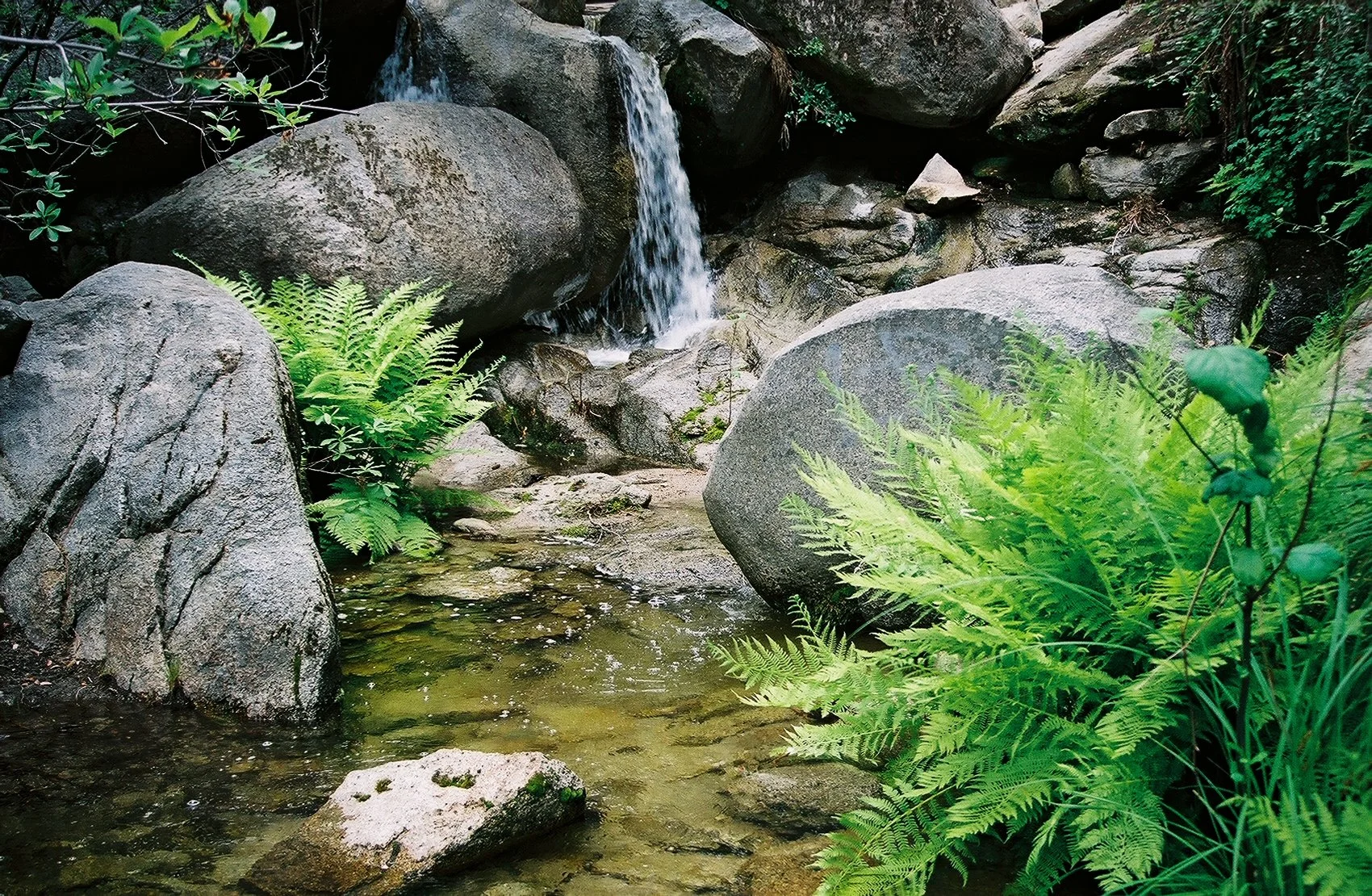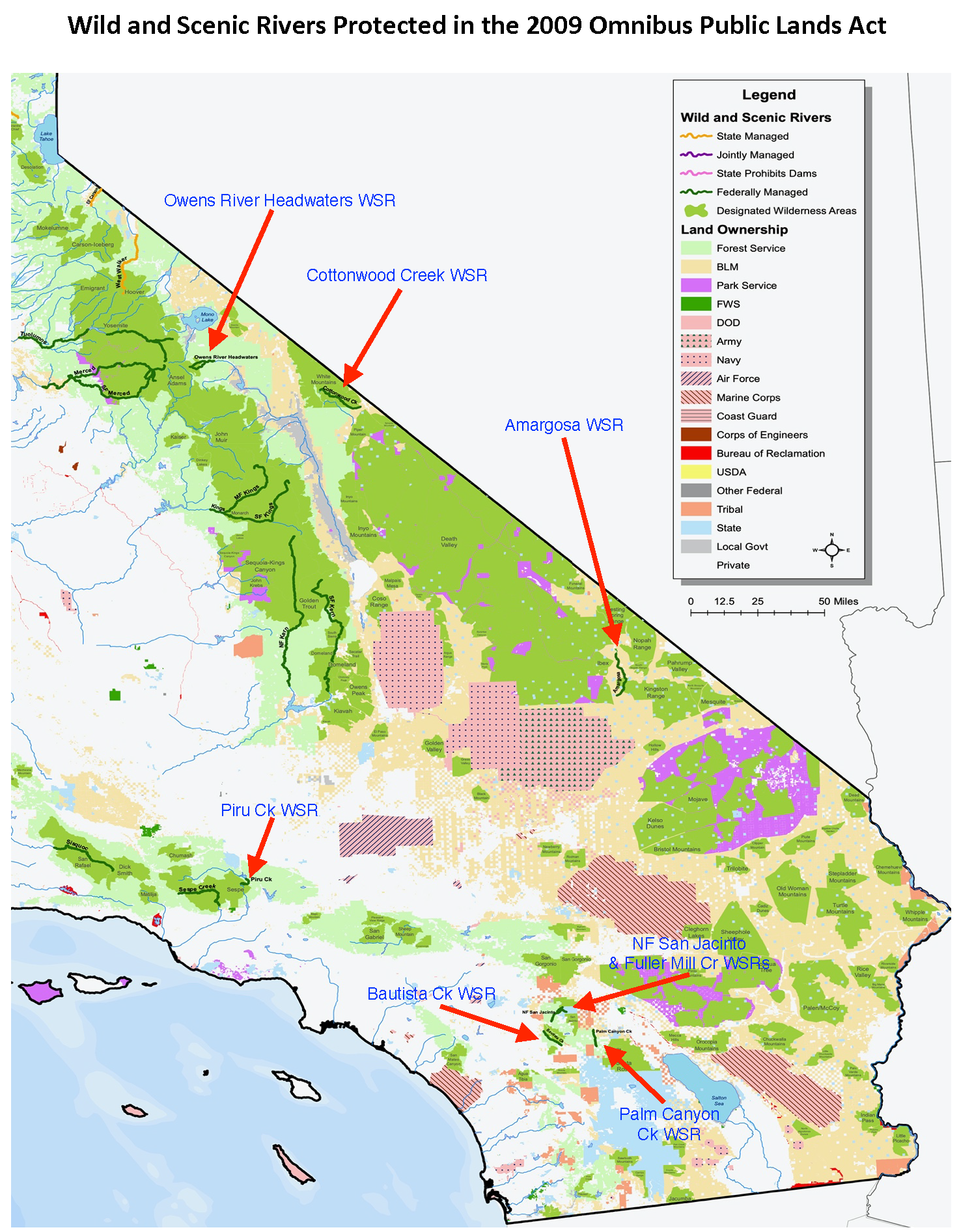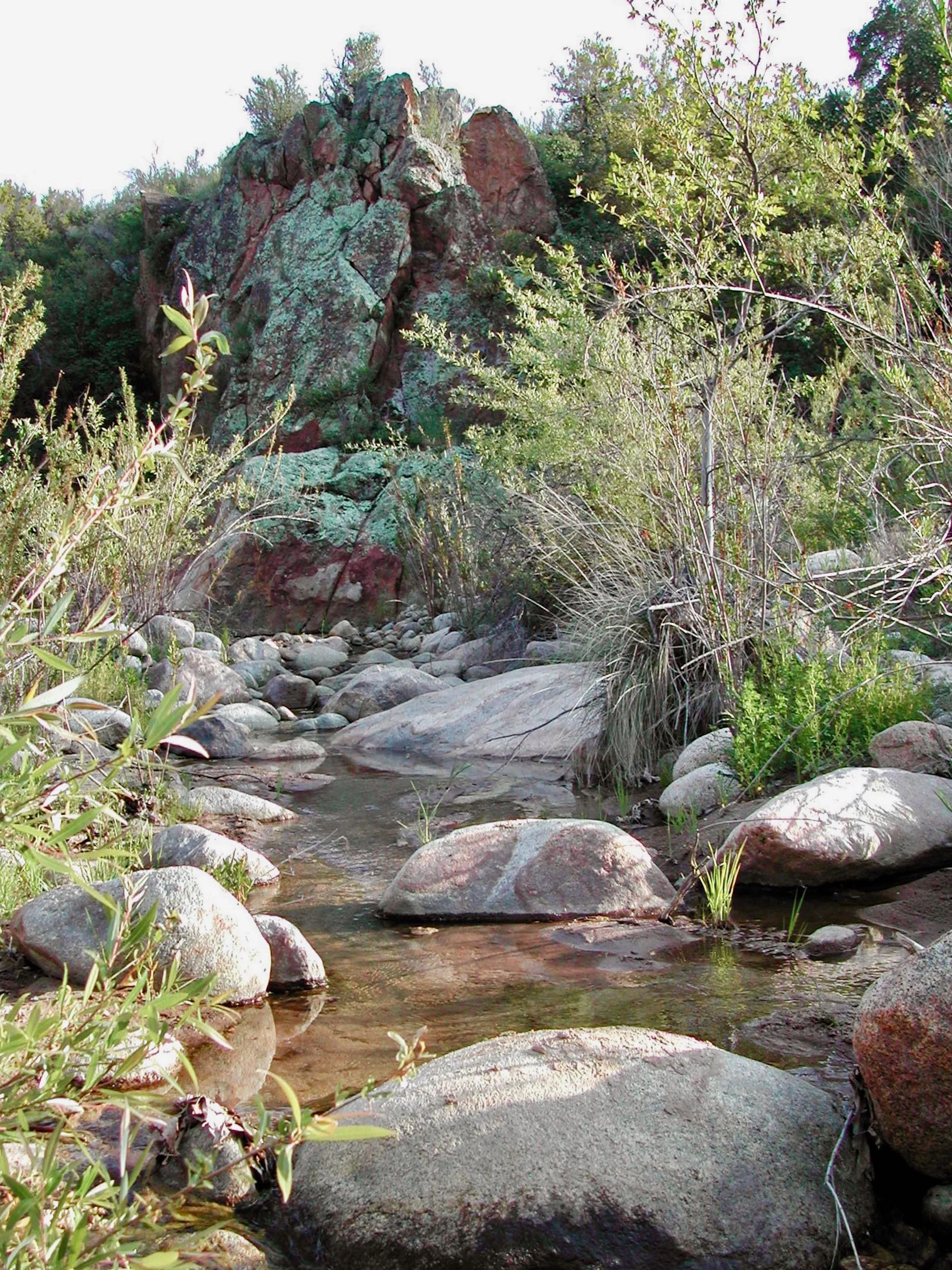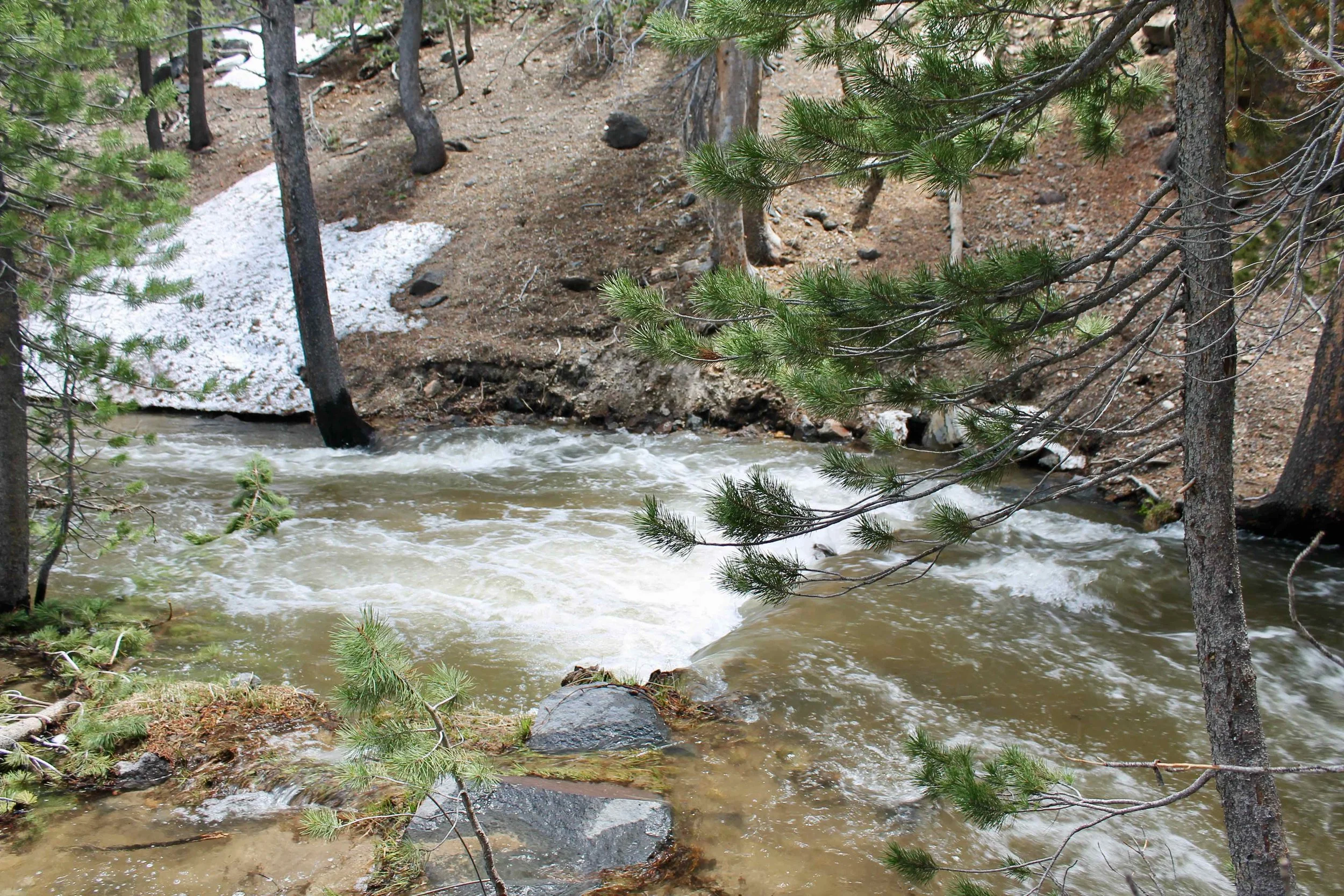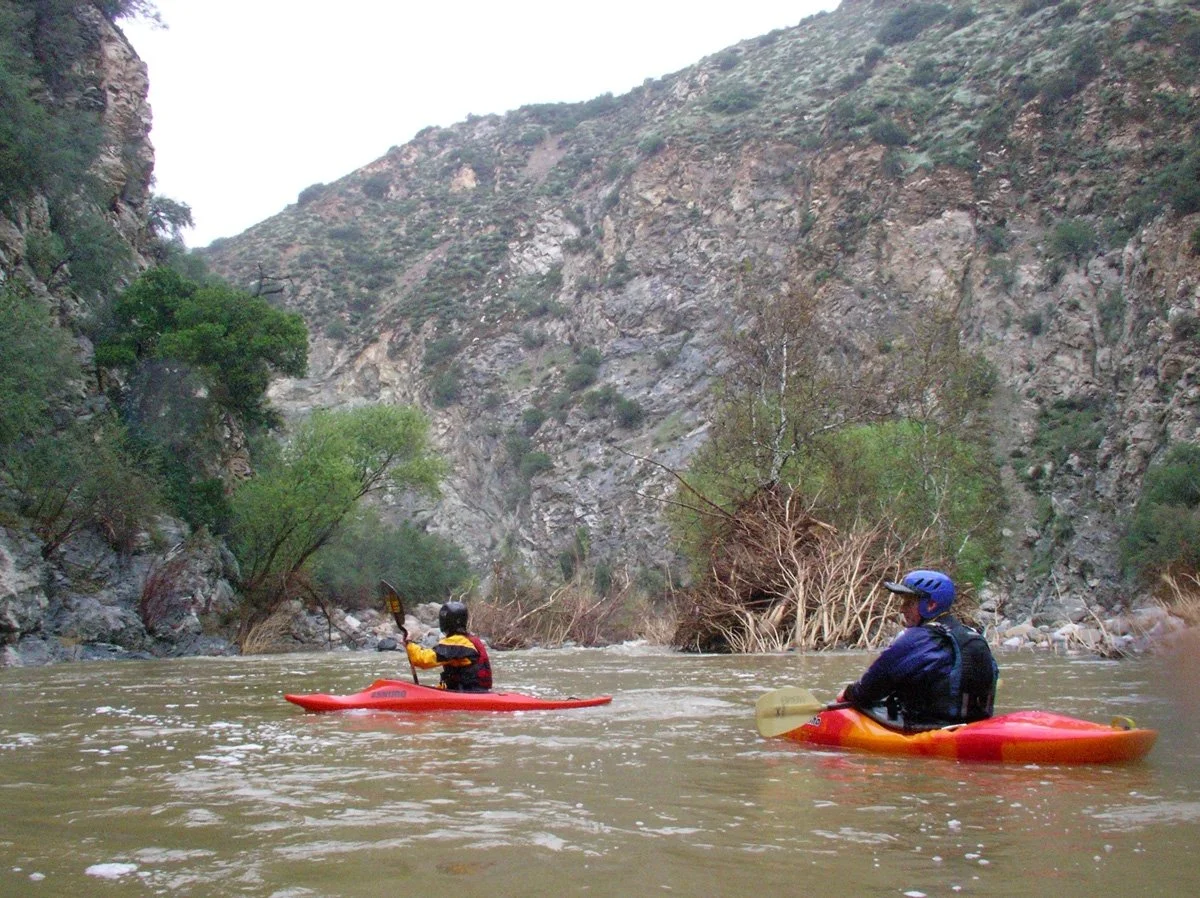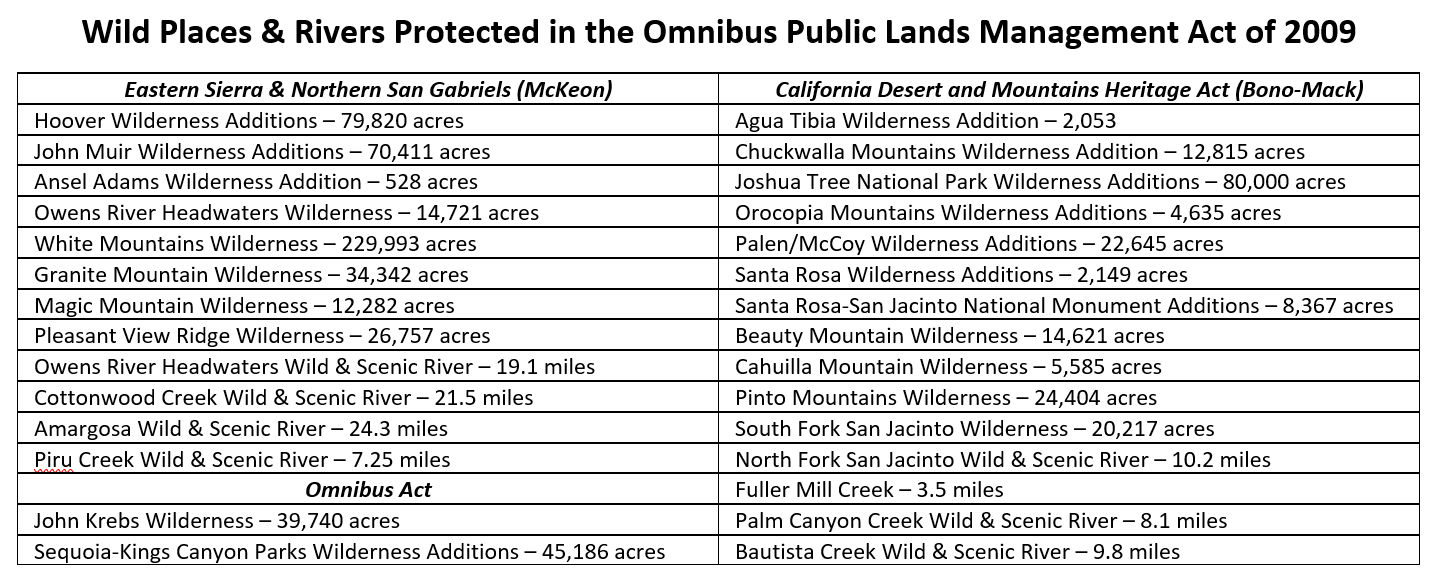March: The 2009 Omnibus Bill Protected 105 Miles of California Rivers
Fuller Mill Creek Wild and Scenic River by Steve Evans
On March 30, 2009, President Barack Obama signed the Omnibus Public Land Management Act of 2009 (Public Law 111-11). The bill was a conglomeration of public land and water measures affecting more than half of the states in the union, as well as the Puerto Rico Commonwealth. For California, the Omnibus Act included designation as Wild and Scenic Rivers 105 miles of streams, as well as 750,000 acres of new Wilderness and Wilderness additions.
Map: Southern California, with red arrows indicating rivers protected by the 2009 Omnibus Act.
The geographic reach of the California sections of the bill is remarkable. It protected wild rivers and places on public lands in the eastern Sierra Nevada, White Mountains, Mojave Desert, northern San Gabriel Mountains, San Jacinto and Santa Rosa Mountains, and southern California’s transverse and peninsular ranges.
Legislative leaders often package many individual bills into a larger package to secure more political support in Congress. The 2009 Omnibus Act included House bills introduced by Rep. Mary Bono-Mack (R) representing Riverside County and Rep. Buck McKeon (R), representing a sprawling district that stretched from northern Los Angeles County to Bridgeport in the eastern Sierra. At the time, the Republican Party controlled the House of Representatives, so Republican champions of these bills was crucial. The Democratic Party controlled the Senate, requiring Rep. Bono-Mack and Rep. McKeon to negotiate with Senator Barbara Boxer (D) and secure the support of Senator Dianne Feinstein (D) to seek passage of their bills in the Senate.
Rep. McKeon’s modest original bill proposed additions to the existing Hoover Wilderness. Senator Boxer worked with Rep. McKeon to expand the bill into what became the Eastern Sierra and Northern San Gabriel Wilderness Act. Most of Rep. McKeon’s voter base resided in northern Los Angeles County, which encompasses the San Gabriel Mountains. Adding wild rivers and places in the San Gabriels boosted public support for the legislation in McKeon’s district.
Ultimately, the McKeon bill included Wild and Scenic River protection for the Owens River Headwaters (Glass Creek, Deadman Creek, and Owens River) in the eastern Sierra, Cottonwood Creek in the White Mountains, Amargosa River in the Mojave Desert, and Piru Creek in the Transverse Ranges north of the San Gabriel Mountains. It also included important additions to the existing Hoover Wilderness, including the headwaters of the state-protected West Walker River. The Owens River Headwaters received double protection as Wilderness and Wild and Scenic Rivers. Additional wilderness designations protected thousands of acres of undeveloped watersheds on public lands.
Glass Creek of the Owens River Headwaters Wild and Scenic River by Steve Evans
Owens River Headwaters Wild and Scenic River by Steve Evans
Rep. Bono-Mack’s California Desert and Mountain Heritage Act was also packaged into the omnibus bill. Her bill proposed Wild and Scenic River protection for four streams in the San Jacinto and Santa Rosa Mountains of southern California, including segments of the North Fork San Jacinto River and its tributary Fuller Mill Creek, Palm Canyon Creek, and Bautista Creek. The Bono-Mack bill also proposed protection for thousands of acres of wilderness and wilderness protection in the California Desert.
Bautista Creek Wild and Scenic River by Steve Evans
The rivers protected in the 2009 bill had been determined eligible for wild and scenic protection by federal agencies in their land and resource plans. Since the mid-80s, Friends of the River has encouraged federal agencies to find streams and rivers to be eligible for Wild and Scenic protection, but agency eligibility studies and subsequent legislative protection can take years. For example, the Forest Service found the Owens River Headwaters and Cottonwood Creek to be eligible in a 1993 initial study. It took 16 years for the political stars to align to allow introduction and passage of legislation protecting these streams in 2009. Due to agency studies, California has a portfolio of nearly 4,500 miles of stream and rivers eligible for federal protection.
To be eligible for protection under the federal Wild and Scenic Rivers Act, a river or stream must be free flowing and possess one or more outstandingly remarkable values including scenery, recreation, fish, wildlife, geology, history, cultural, or others. Streams with flows modified by upstream or downstream dams may be considered free flowing if the flows from the dam(s) support the outstanding values of the creek. Once designated by Congress, the managing federal agency is responsible for protecting the free-flowing character and outstanding values of the river (which means no new dams on the designated segment). To ensure protection of the free-flowing character and outstanding values of newly designated rivers, managing federal agencies are required to develop a Comprehensive River Management Plan (CRMP) within three years after designation.
Largely because its flow was modified by Pyramid Dam, Piru Creek was originally assessed by the Forest Service as ineligible in the 1988 Los Padres Forest Plan. An appeal by Friends of the River resulted in the agency grudgingly finding the creek to be eligible due to its outstanding geology value. Congress apparently agreed with Friends of the River’s view on the creek’s eligibility, because 7.25 miles of the creek were designated a National Wild and Scenic River in the 2009 Omnibus Act.
North Fork San Jacinto by Steve Evans
Also in 1988, Friends of the River supported the Forest Service’s initial determination finding several streams eligible in the San Jacinto and Santa Rosa Mountains of southern California, including segments of the North Fork San Jacinto River and its tributary Fuller Mill Creek, as well as Bautista Creek, and Palm Canyon Creek. Again, Congress agreed by including these Wild and Scenic Rivers in the 2009 Omnibus Act. Outstanding values were primarily ecology and wildlife – all four streams support threatened and endangered wildlife species. Other protected values of these streams included scenery, botany, and cultural.
Deadman Creek Wild and Scenic River by Steve Evans
An appeal by Friends of the River also resulted in the 1993 eligibility assessment of Glass Creek, Deadman Creek, Big Springs, and a short segment of the Owens River. These water features were packaged together into that the Owens River Headwaters Wild and Scenic River for the 2009 bill. All of the segments that make up the Owens River Headwaters were determined eligible by the Forest Service, except for the upper segment of Deadman Creek – the agency believed that the stream possessed no outstanding values. Congress disagreed and included all of Deadman Creek in the Owens River Headwaters designation. The outstanding scenery, recreation, wildlife, and botany values of upper Deadman Creek were subsequently documented by the Forest Service in the 2022 Owens River Headwaters Comprehensive River Management Plan (CRMP).
Cottonwood Creek Wild and Scenic River by Steve Evans
Cottonwood Creek in the White Mountains required a joint assessment by the Forest Service and the Bureau of Land Management (BLM). The identified outstanding values included fish, history, and culture. It too was found eligible due to its outstanding scenery, recreation, fish, wildlife, and cultural values by the agencies and included in the Omnibus Act. The BLM also determined 26 miles of the Amargosa River south of Death Valley in the Mojave Desert to be eligible in 2002. Outstanding values of the river include scenery, recreation, fish, wildlife, history, and cultural values.
Many of the wild places and rivers proposed for protection in the 2009 Omnibus Act had originally been included in Senator Boxer’s statewide California Wild Heritage Act, which was first introduced in 2002 and was reintroduced in subsequent Congresses. In 2005, Senator Boxer and Friends of the River and its conservation allies focused on implementing the statewide bill on a congressional district by district basis. To pass the legislation, Friends of the River and its allies implemented a proven strategy of forming coalitions with national and local conservation and social justice groups to help mobilize public support. Another key strategy included securing support from county supervisors, city councils, and other local elected officials and community leaders; chambers of commerce and local businesses; local water agencies; and Native American tribes.
Piru Creek Wild and Scenic River by Gary Valle
All successful legislative campaigns require pragmatism and persistence. Although it is useful to have agency concurrence about the eligibility of a stream, Congress remains the final arbiter. It often takes years of lobbying agencies and Congress to add a stream to the National Wild and Scenic Rivers System. First identified as eligible in 1988, the short seven miles segment of Piru Creek downstream of Pyramid Dam was protected 21 years later, in 2009. Friends of the River and its conservation allies are currently supporting reintroduction of legislation to protect another 47 miles of Piru Creek upstream and downstream of the designated segment. In addition, there is an opportunity in the CRMP process to add more protected outstanding values for the designated segment.
Amargosa Wild and Scenic River by John Dittli
Persistence also resulted in the addition of 7.5 miles to the 24-mile Amargosa Wild and Scenic River with the introduction of Senator Dianne Feinstein’s California Desert Protection Act (part 2) in 2010, which was subsequently rolled into the John C. Dingell Conservation, Management, and Recreation Act -- another omnibus bill approved by Congress in 2019. Patience, persistence, and dedication is required during the multi-year process to secure protection for our endangered rivers.
Friends of the River and its conservation allies recognize those who helped pass this legislation and protect these important wild rivers and places in 2009, including our legislative champions – Rep. McKeon, Rep. Bono-Mack, Senator Boxer, and Senator Dianne Feinstein. In addition, protection of these areas would not have been possible without our conservation and social justice allies, including CalWild, The Wilderness Society, Sierra Club, Friends of the Inyo, Community Hiking Club, Friends of Desert Mountains, National Hispanic Environmental Council, and many groups and individual activists and supporters too numerous to list here.

